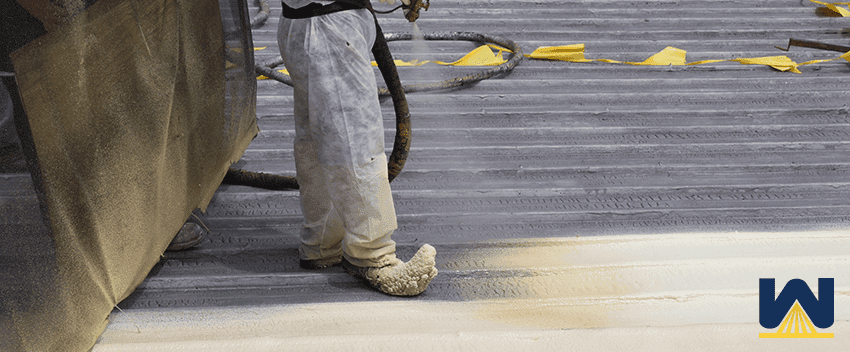So, you’re thinking about a spray foam roof? After viewing the pros and cons of a spray foam roof, you determine that a spray foam roof is right for my building.
But then you think…shoot, what if it gets pulverized by hail and I’m back at square one?
This article will cover:
- A few statistics on hail damage and roofs
- What hail damage looks like on a spray foam roof
- How a spray foam roof handles hail damage
- How hail damage gets repaired on a spray foam roof
- Are hail-proof warranties available?
- Some finishing thoughts
Ready, lets go!
A few statistics on hail damage and roofs
No matter what kind of roof you have (Shingles, TPO, EPDM, Spray Foam, etc.), every type of roof will be damaged because of hail.
Hail happens in almost every state (except Hawaii and Alaska). Here are the top 5 states in *hail storms for 2018:
- Texas – 508
- Kansas – 493
- Colorado – 332
- Nebraska – 309
- South Dakota – 309
*hail storm = having hail one inch in diameter or larger
Now that we know hail damage is unavoidable no matter what kind of roof you have, and hail damage happens in almost every state, what does hail damage look like on a spray foam roof?
What does hail damage on a spray foam roof look like?
Here’s a photo of what mild hail damage looks like:
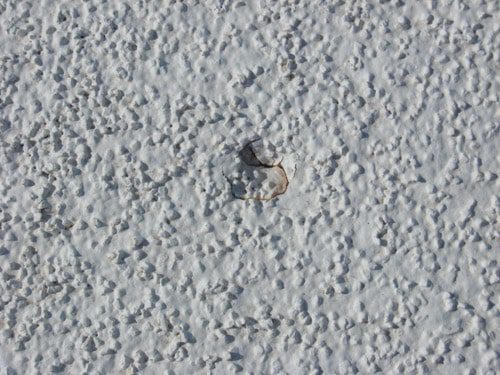
Source: Canyon State Roofs
Here’s a photo of what severe hail damage looks like:
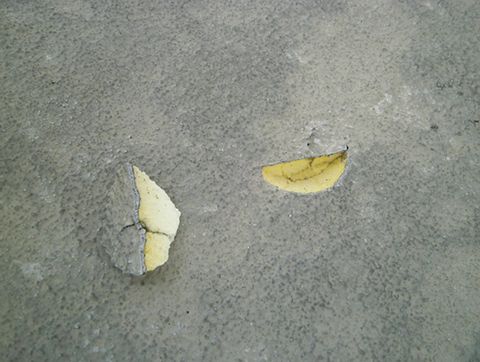
Source: Construction Specifier
Now that you’ve seen what hail damage looks like, lets dive into how spray foam handles hail damage.
How a spray foam roof handles hail damage
As we saw before, spray foam roofs will indent and the surface may crack when being exposed to hail. When a roofing contractor sprays foam down, it’s usually about 1.5 inches thick.
We’ve seen some crazy hailstorms, ones that’ve made impacts as deep as ½ inch.
The great thing about spray foam is that it’s closed cell, meaning water cannot travel laterally through the system. Water will not leak unless the full 1.5 inches is broken through.
What about spray foam coating?
Since spray foam isn’t resistant to UV lighting, there must be a coating over top to reflect the UV rays.
Interesting Fact: Uncoated SPF will only last about 72 hours from UV lighting before it begins to deteriorate.
Depending on what area of the country your building’s in, will determine what kind of coating you should use.
Southwest/Southern Midwest – Spray foam roofs in the Southwest and Southern Midwest areas generally use acrylic coating. Acrylic is very strong (more than 1500 PSI of tensile strength), which is great because these areas are more prone to hail damage being in the hail belt.
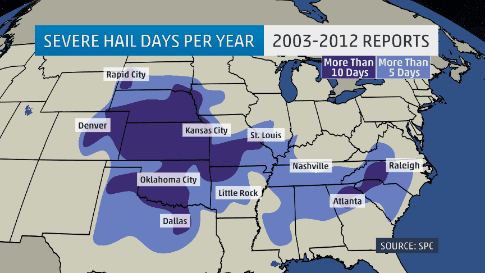
Top Midwest/East – Spray foam roofs in the northern section of the Midwest or further along east will generally use silicone coating. Silicone isn’t as strong as acrylic (300 PSI Tensile vs more than 1500 PSI Tensile), but silicone will withstand the dew cycles and moist air of these areas during application.
Hodge-Podge – Areas in the middle of the previous two areas sometimes use urethane coating. Urethane is strong (1500 PSI Tensile), which increases the impact resistance of the spray foam roof.
Now that we know what coatings will be used on our spray foam roof, how does the roof get repaired?
How hail damage gets repaired on a spray foam roof
With a spray foam roof, you can simply do a recoat, and/or add sealant to the visible damage and you’re good to go. The level of repair depends on frequency and depth.
Here is a chart from the SPFA on mechanical damage and repair recommendations:
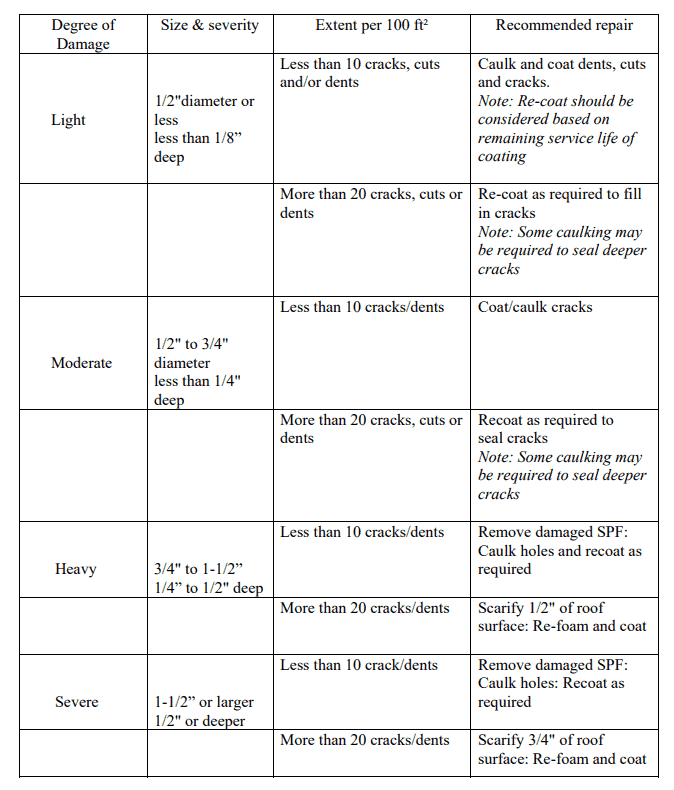
Are hail-proof warranties available?
We’ve heard the question multiple times, “Do you guys offer a hail-proof warranty?”. The answer is yes.
Although it can greatly increase the cost of your roof, we can develop a roofing system built to be hail-resistant, or at least be covered under warranty should it be damaged.
Some finishing touches
In the battle of spray foam roofs vs hail, there’s no doubt spray foam wins. Spray foam wins because it’s:
- Usually 1.5 inches thick – thick enough to remain watertight from damage by large hail
- Easier and cost effective to repair than most other roofing systems
- Closed-cell, meaning water cannot penetrate the foam even with hail damage
Simply put, a spray polyurethane roof will hold up against hail damage.

